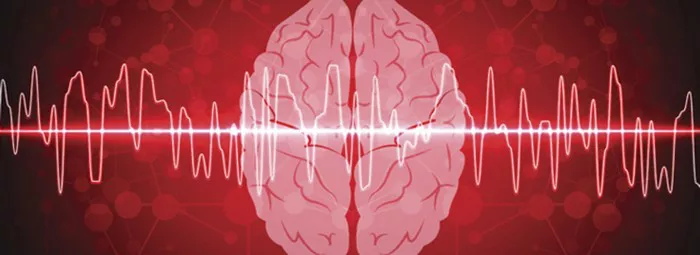Paroxysmal atrial fibrillation (PAF) is a type of atrial fibrillation (AF) characterized by irregular and rapid heartbeats that occur intermittently. Unlike persistent or permanent AF, which are continuous, PAF episodes come and go unpredictably. This article delves into the intricacies of PAF, exploring its causes, symptoms, diagnosis, and treatment options.
What is Paroxysmal Atrial Fibrillation?
Atrial fibrillation is a cardiac arrhythmia that affects the heart’s upper chambers, the atria. In PAF, the heart’s electrical signals become disorganized, leading to chaotic and rapid atrial contractions. These irregular contractions can result in symptoms such as palpitations, shortness of breath, chest discomfort, and fatigue.
Causes of Paroxysmal Atrial Fibrillation
Several factors can contribute to the development of PAF. These include:
1. Age: PAF is more common in older adults, particularly those over 60 years of age.
2. Underlying Heart Conditions: Conditions such as coronary artery disease, heart valve disorders, and congenital heart defects can increase the risk of PAF.
3. High Blood Pressure: Hypertension is a significant risk factor for PAF.
4. Obesity: Being overweight or obese can strain the heart and increase the likelihood of arrhythmias.
5. Sleep Apnea: People with untreated sleep apnea have a higher risk of PAF.
6. Thyroid Disorders: Both hyperthyroidism and hypothyroidism can contribute to atrial fibrillation.
7. Excessive Alcohol Consumption: Heavy alcohol intake can trigger AF episodes.
8. Stress and Anxiety: Emotional stress and anxiety can exacerbate PAF symptoms.
9. Stimulants: Certain medications, caffeine, and stimulants like nicotine can provoke AF episodes.
10. Genetics: A family history of AF can predispose individuals to develop PAF.
Symptoms of Paroxysmal Atrial Fibrillation
PAF symptoms can vary in severity and duration. Common symptoms include:
1. Palpitations: Irregular or rapid heartbeat sensations.
2. Fatigue: Feeling tired or weak, especially during or after AF episodes.
3. Shortness of Breath: Difficulty breathing or catching your breath.
4. Chest Discomfort: Chest pain, pressure, or tightness.
5. Dizziness or Lightheadedness: Feeling faint or dizzy.
6. Weakness: Generalized weakness or feeling unsteady.
7. Reduced Exercise Tolerance: Difficulty with physical exertion due to heart rhythm disturbances.
It’s essential to note that some individuals with PAF may not experience any symptoms, known as silent AF. Regular heart monitoring and screenings are crucial for early detection and management.
Diagnosis of Paroxysmal Atrial Fibrillation
Diagnosing PAF involves a comprehensive evaluation by healthcare professionals. Key diagnostic steps include:
1. Medical History: Reviewing the patient’s medical history, including symptoms and risk factors.
2. Physical Examination: Checking vital signs, listening to the heart, and assessing overall health.
3. Electrocardiogram (ECG or EKG): Recording the heart’s electrical activity to detect irregular rhythms.
4. Holter Monitor: A portable device worn for 24 to 48 hours to monitor heart rhythms continuously.
5. Event Monitor: Similar to a Holter monitor but worn for a more extended period to capture intermittent AF episodes.
6. Echocardiogram: Using sound waves to create images of the heart’s structure and function.
7. Blood Tests: Checking for thyroid function, electrolyte imbalances, and other potential contributors to AF.
Treatment Options for Paroxysmal Atrial Fibrillation
The management of PAF aims to control symptoms, prevent complications, and reduce the risk of stroke and other cardiovascular events. Treatment strategies may include:
Medications:
1. Antiarrhythmic Drugs: Medications to restore and maintain normal heart rhythm.
2. Rate-Control Drugs: Medications to slow down the heart rate during AF episodes.
3. Anticoagulants: Blood-thinning medications to reduce the risk of blood clots and stroke.
Cardioversion:
1. Electrical Cardioversion: A procedure to restore normal heart rhythm using electrical shocks.
2. Chemical Cardioversion: Using medications to convert AF back to normal sinus rhythm.
3. Catheter Ablation: A minimally invasive procedure to destroy abnormal heart tissue that triggers AF.
Lifestyle Modifications:
1. Healthy Diet: Emphasizing a balanced diet rich in fruits, vegetables, and whole grains.
2. Regular Exercise: Engaging in physical activity as recommended by healthcare providers.
3. Stress Management: Techniques such as meditation, yoga, and relaxation exercises.
4. Alcohol and Caffeine Moderation: Limiting intake of substances that can trigger AF episodes.
5. Managing Underlying Conditions: Treating conditions like hypertension, sleep apnea, and thyroid disorders.
6. Stroke Prevention: Using anticoagulants or antiplatelet medications to reduce the risk of stroke.
Conclusion
Paroxysmal atrial fibrillation is a complex cardiac arrhythmia that requires careful management and monitoring. By understanding its causes, recognizing symptoms, undergoing timely diagnosis, and implementing appropriate treatment strategies, individuals with PAF can effectively manage their condition and improve their quality of life. Collaboration between patients, healthcare providers, and cardiac specialists is essential in achieving optimal outcomes for those living with PAF.

